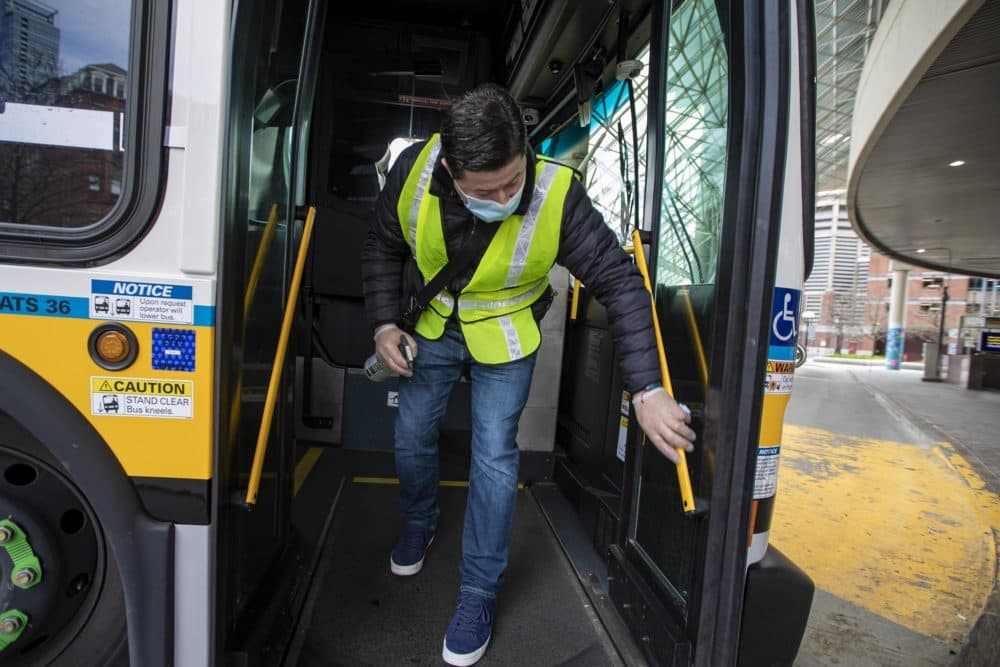Advertisement
Coronavirus Coverage
MBTA Prepares To Increase Service As State Looks To Reopen Businesses

As the state looks to reopen businesses, the MBTA is also making plans to increase its service.
The T scaled back in March due to plummeting ridership amid the coronavirus pandemic. MBTA ridership (bus and train combined) is currently down 85%.
Transit officials expect ridership to slowly return to the MBTA.
To meet that expected demand, the T will consider increasing service at off-peak times, adding more dedicated bus lanes to speed up travel, and encouraging alternate modes of transit to reduce crowding.
"We are taking a look at different scenarios for how ridership might return, also taking into account that ridership — given the variability across routes — is going to return at different rates for different routes," General Manager Steve Poftak said at the MBTA's Fiscal and Management Control Board meeting Monday.
Vehicle capacity and worker availability are the biggest challenges for the T as it makes plans to ramp up service, he said. Without enough workers to operate the fleet, it will be difficult to maintain proper social distancing on trains and especially buses.
There are currently over 450 MBTA workers out on leave related to COVID-19, Poftak said.
"Just to give you a sense of how that impacts operations, 25% of bus operators are not available on the typical day over the last week primarily due to COVID-19," Poftak said. "So, we have real challenges in terms of workforce availability."
On social distancing, the T is particularly concerned about the capacity on buses and is trying to figure out if there should be restrictions on the number of riders per vehicle. There are still questions about how to enforce such a rider cap, and it could potentially create equity issues, Poftak noted.
Transportation Secretary Stephanie Pollack said limiting capacity on public transit also raises budget concerns, since the T would take in less revenue with fewer riders on a trip.
"I don't think anyone has actually figured out how to actually, logistically and equitably run a socially-distanced transit system. Everyone is trying to figure it out now," Pollack said at Monday's meeting. "We're taking a peek at Europe and Asia, because they're a little ahead of us. But, believe me, if we had been able to find that 'wow, they're doing it perfectly,' we would just steal it, right? And it's not there."
As part of its service planning, the MBTA is looking for ways to alert riders to overcrowding on the transit system. The T is also looking for ways to encourage people to use less-congested transit routes or alternative transportation, such as carpooling, biking and walking.
The city of Boston is also looking at ways to accommodate pedestrians and cyclists. Mayor Marty Walsh said Monday that the city is looking at expanding sidewalk space by opening up roadway lanes for pedestrians and cyclists use, which would reduce traffic speeds and give people more space. The city will also consider expanding bus stops and creating bus-only lanes, which would allow the T to run reduced-capacity buses more frequently.
Transit officials are also talking with business leaders to see how companies may continue to allow for telecommuting and flexible work schedules. The idea is to see if there are ways to stagger peak commuting times to ease congestion and crowding as people travel at different times of the day for work, Poftak said.
